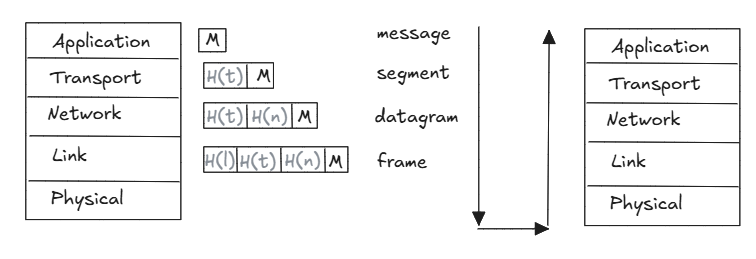Network Speed, Structure, and Safety
Performance
Packets experience delays as they travel through the network. Types of delays are →
| Delay Type | Meaning | Analogy |
|---|---|---|
| Queuing Delay | Packets waiting in the router’s buffer before being forwarded due to network congestion | Cars waiting in line before reaching the toll booth due to traffic congestion |
| Processing Delay | Router checking the packet’s header and deciding where to forward it | Toll booth verifying payment before allowing the car to pass |
| Transmission Delay | Time taken to push all bits of a packet onto the transmission medium (fiber-optic or copper cable) | The toll booth lifts the barrier, and your car moves onto the highway. |
| Propagation Delay | Time taken for data to travel through the physical medium (fiber optic cable or wireless network) | Time taken for a car to drive from the toll booth to the next checkpoint or destination |
Throughput - The rate at which data is successfully transferred between sender and receiver, measured in bits per second (bps, Mbps, Gbps).
Layering
The Internet organizes its protocols into a stack of layers, each providing specific functions and services to the layer above it.

Network Security
Internet’s open nature makes it vulnerable to attacks that disrupt services or compromise data.
Types of Attacks:
- Malware: Malicious software (e.g., viruses, worms, ransomware) that infects end systems, often spreading via email, downloads, or network vulnerabilities. Can steal data, delete files, or take control of devices.
- Denial-of-Service (DoS): Attackers flood a server, router, or network with traffic to overwhelm it, preventing legitimate users from accessing services.
- Packet Sniffing: Attackers intercept and read packets traveling over unencrypted networks (e.g., public Wi-Fi), capturing sensitive data like passwords.
- Spoofing: Attackers impersonate a trusted system by forging packet headers (e.g., fake IP addresses) to trick devices into accepting malicious data.